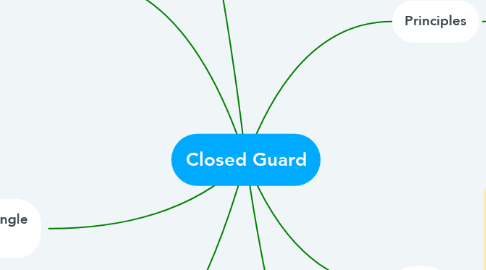Closed Guard
by Conrad Chamerski

1. Side scissor to Back Take
1.1. The best position to be in is when the partner's arm is across the body so you can attack the back. This one position can move to other many position systems. The partner has to stand up and lean forward to escape. As the partner leans forward, you take a 2 on 1, knee pull and push the arm to the side. Now you can grab the far lab around the back, shrimp out so you have a side scissor. Concept: You head needs to be higher that the partner's. To keep the heard lower, you can pull with your hand the lat and push down with the leg, but you have to quickly stand up. Get into a half-power nelson. 10-finger grip & baby motion to push the head down and roll to the back.
2. Side Scissor to Juji Gatame
2.1. We can use a variety of grips; elbow posts, 2 on 1 grips... we'll stick just on 1 for the side scissor series. Most important concept, the second you see the partner stand up, **you must knee pull!** If you feel like you can't come up, keep the outside arm posted, and with the inside arm, grab inside like the rolling kimura pass with your inside arm. Get your outside leg and shin on the neck. If you fall and the partner rolls, great arm bar. If not, grab the ankle and pull, gran again the further leg so now you can finish rolling. Note: You need to learn all the moves first, then you learn the overlapping systems.
3. Side Scissor to Rear Triangle (Oshiosantaku)
3.1. You don't need the 2 on 1. Anytime you can get the partner's arm across you can hit this attack. If you are on the side scissor and you see the opportunity to get your outside leg over the far shoulder in a hole, get it. Triangle>Armbar. Similar flow than the jiuji, but you get the foot in the shoulder hole. Once the leg is in, roll. Move the legs to the grabbed arm and lock the triangle.
4. Pendulum Sweep to Front Triangle
4.1. If the partner untangles his hand out and posts, to prevent the sweep, you can go into a front triangle. Note: You don't want to stay parallel to finish. Get a collar tie and leg scoop. You can pendulum from this scoop position. So it's not a front triangle. You pendulum again gun to get your legs perpendicular (T-shape) and lock over your calf and squeeze.
5. Intro
5.1. You have you see your partner's spin as a lever. The only was the partnet can escape the closed guard is to stand up. Your goal is to keep the posture broken. Main concepts: 1. Have the partner's elbow across the center line → Attack the back 2. Elbow on the center line → Attack the arms 3. Elbow outside → Attack from inside 4. Other scenarios: 1. Monitor partner's shoulders and hips, if at the same level → hip bump attacks 2. Opponent stands-up → Armbars or Leg attacks - Micro vs macro adjustments - To get micro adjustments, you need to have **movement**(knee pull) and **angle**. - How you create that? Through misdirection.
6. Principles
6.1. Main concepts: 1. Have the partner's elbow across the center line → Attack the back 2. Elbow on the center line → Attack the arms 3. Elbow outside → Attack from inside 4. Other scenarios: 1. Monitor partner's shoulders and hips, if at the same level → hip bump attacks 2. Opponent stands-up → Armbars or Leg attacks - Micro vs macro adjustments - To get micro adjustments, you need to have **movement**(knee pull) and **angle**. - How you create that? Through misdirection.
7. Side Scissor to Pendulum sweep
7.1. Use this when the partner keeps his head up and tries to push over you so you cant get up. When the partner moves towards you, the far leg is exposed for a scoop grip. The technique of the pendulum is to use your leg motion first, then to invert to get your back off the floor. Try to land with a punched underhook in to mount easily.


